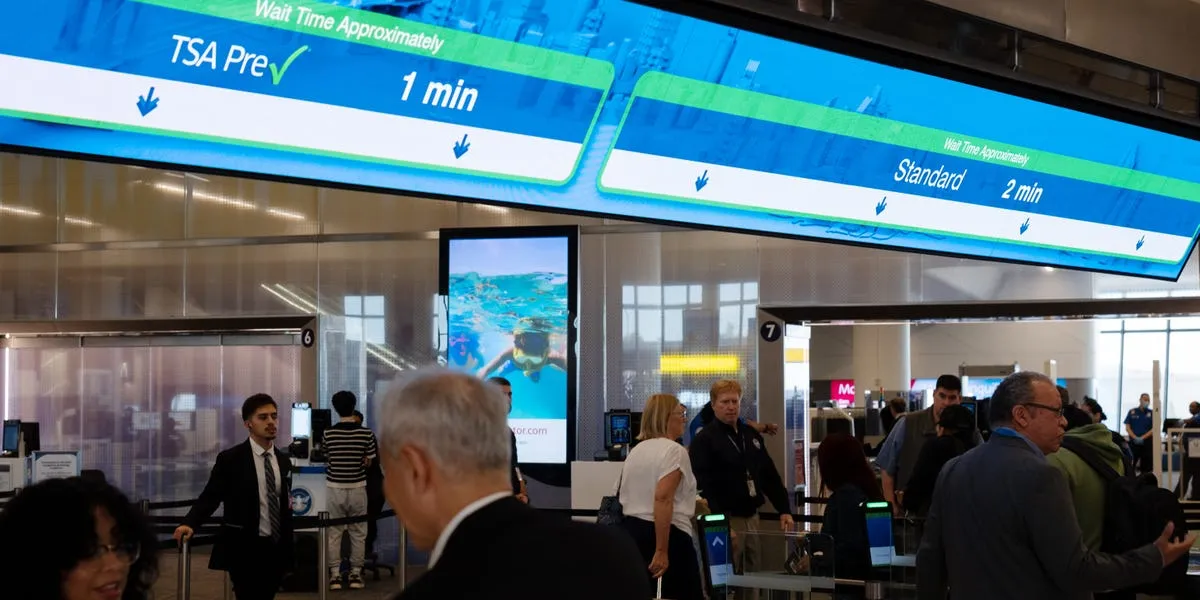
As the nationwide Real ID rollout commenced, the expected turmoil of long lines and confusion surprisingly gave way to a sense of calm at major airports. The Transportation Security Administration (TSA) reported that approximately 81% of travelers were adequately prepared with the necessary identification, leaving hundreds of thousands still needing to upgrade their IDs.
Business Insider's reporters were present at two of the busiest airports in the United States: New York City's LaGuardia Airport and Hartsfield-Jackson Atlanta International Airport. With media crews stationed throughout the terminals, there was an anticipation of potential chaos as the new rules took effect. However, observations from the first few hours revealed an unexpectedly organized environment. There were no long security lines, and most travelers arrived prepared with the correct documentation.
The TSA employed a two-line strategy to streamline the process, resulting in minimal wait times. On Wednesday, which is generally a low travel day, the posted wait times at both airports were under 10 minutes, even less for those utilizing TSA PreCheck. Jayden Martinez, an employee at LaGuardia's Terminal B, noted that travelers without a Real ID were directed to a separate security line, but this did not significantly impact overall TSA wait times. Those with acceptable IDs, including Real IDs and passports, received a slip indicating their approval to fly.
Interestingly, the compliance rate for Real IDs in New York is only around 45%. In stark contrast, neighboring New Jersey has one of the lowest compliance rates in the country at about 19%. At Newark Liberty International Airport, TSA wait times ranged between two and 18 minutes, showing that even with lower compliance, the process remained efficient.
Meanwhile, in Atlanta, where compliance rates hover near 100%, the security lines were similarly unobstructed on Wednesday morning. Alexis Pickeral, the lead TSA officer at the Atlanta airport, remarked on the surprisingly low level of Real ID noncompliance, even less than anticipated. Travelers without a Real ID were issued a red noncompliance card and subjected to additional screening, although Pickeral assured that this process was quick.
In the lead-up to the Real ID deadline, which has been in the works for nearly two decades, both the government and airlines cautioned travelers about potential long security lines. Many heeded this advice, budgeting extra time for their security checks. Travelers like Scott Adkins and Erin Courtney, flying from New York to Illinois, arrived 45 minutes earlier than usual. Adkins, who obtained his Real ID years prior, noted the importance of being prepared. On the other hand, Courtney faced challenges securing an appointment for her Real ID and opted to bring her passport instead, ensuring it was not expired before her flight.
Two women from Birmingham, Alabama, leading a college trip, also arrived early at LaGuardia with their Real IDs in hand. They recounted the difficulties of obtaining their updated licenses, with one of them needing to visit the DMV three times before finally receiving her Real ID just five days prior to the trip. For four months leading up to their flight, they had informed students of the necessity of having either a Real ID or a passport.
Hayden B, a first-time flyer with a Real ID, described her experience flying from Las Vegas to Atlanta on Wednesday. Alerted about the enforcement deadline a few weeks before her journey, she found the security process seamless, taking only five minutes. This smooth experience reflects the effective implementation of the Real ID rules at major airports.
In summary, despite the fears of chaos surrounding the Real ID rollout, major airports demonstrated an organized and efficient response, ensuring travelers could navigate the new identification requirements with relative ease.